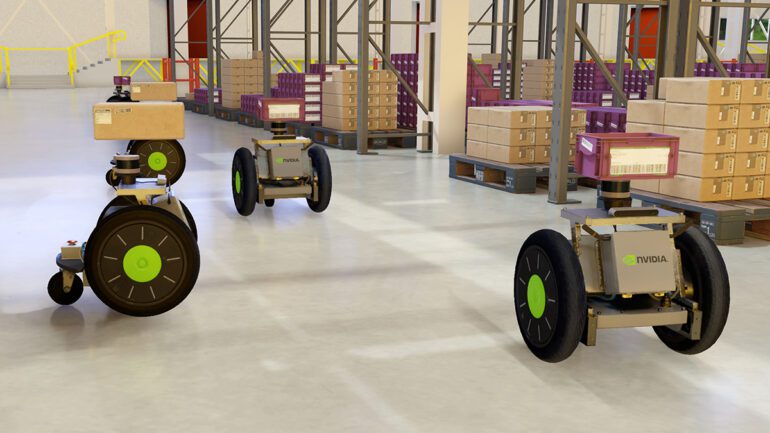TL;DR:
- Generative AI is a hot topic in robotics, with various approaches being explored.
- Nvidia’s Deepu Talla highlights the productivity improvements brought by generative AI.
- Nvidia announces ROSCon news, including Nvidia Isaac ROS 2.0 and Nvidia Isaac Sim 2023 platforms.
- Nvidia’s systems aim to accelerate the adoption of generative AI among roboticists.
- The Jetson Generative AI Lab offers access to open-source large language models.
- These models help systems make informed decisions in dynamic environments.
- Deepu Talla emphasizes that generative AI will enhance AI deployments at the edge.
- The latest platform versions bring improvements in perception and simulation.
Main AI News:
The world of robotics has been abuzz with discussions surrounding generative AI. From leveraging natural language commands to innovative design approaches, the industry is exploring various avenues to harness these emerging technologies. In a recent interview at Nvidia’s South Bay headquarters, I delved into the realm of generative AI with Deepu Talla, the Vice President and General Manager of Embedded & Edge Computing at Nvidia.
Talla emphasized, “The results speak for themselves. You can already witness remarkable improvements in productivity. It can compose an email, not flawlessly, but it eliminates the need to start from scratch, offering an impressive 70% completion. Clearly, there are discernible advancements that represent a significant leap from the past. While it may not be perfect at summarizing, I wouldn’t let it read and summarize for me. However, signs of enhanced productivity are already evident.”
Interestingly, Nvidia was on the verge of unveiling groundbreaking news in this domain. The ROSCon announcement coincided with several other updates related to its diverse range of robotics solutions, including the wide availability of the Nvidia Isaac ROS 2.0 and Nvidia Isaac Sim 2023 platforms.
These systems wholeheartedly embrace generative AI, a move poised to accelerate its integration within the robotics community. Nvidia notes that approximately 1.2 million developers have engaged with the Nvidia AI and Jetson platforms, including esteemed clients like AWS, Cisco, and John Deere.
Notably, the Jetson Generative AI Lab emerges as a significant development, granting developers access to open-source large language models. Nvidia describes it as follows:
“The NVIDIA Jetson Generative AI Lab provides developers with access to optimized tools and tutorials for deploying open-source LLMs, diffusion models for generating captivating images interactively, vision language models (VLMs), and vision transformers (ViTs) that seamlessly merge vision AI and natural language processing, enabling a comprehensive understanding of the environment.”
These models hold the potential to guide systems in making informed decisions in unfamiliar scenarios, a capability not adequately addressed by simulations alone. While environments such as warehouses and factory floors are relatively structured, they still present a myriad of variables. The goal is to facilitate real-time adjustments and offer a more intuitive natural language interface for these systems.
Deepu Talla aptly summarizes the significance of generative AI in this context, stating, “Generative AI will significantly expedite AI deployments at the edge, offering improved generalization, ease of use, and higher accuracy than ever before. This extensive software expansion of our Metropolis and Isaac frameworks on Jetson, combined with the capabilities of transformer models and generative AI, fulfills this crucial need.”
Furthermore, the latest iterations of these platforms introduce enhancements in perception and simulation, promising a transformative impact on the field of robotics.
Conclusion:
Nvidia’s foray into generative AI is poised to reshape the robotics landscape. With productivity gains and the introduction of innovative tools, Nvidia is set to lead the charge in accelerating generative AI adoption within the industry. This development signifies a pivotal shift towards more efficient and capable robotic systems, marking a significant milestone in the market’s evolution.

